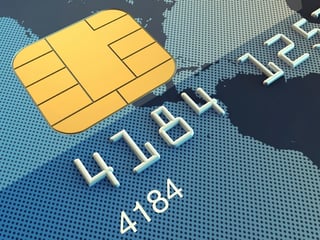 You may not know this, but the U.S. possibly has the most complex point of sale (POS) debit payment system on the planet. You can trace this back to its origins as an ATM card acceptance process, supported by multiple ATM networks. These grew into what we know as today’s POS networks. With support from major card brands, the concept of “signature debit” transactions is processed through credit networks.
You may not know this, but the U.S. possibly has the most complex point of sale (POS) debit payment system on the planet. You can trace this back to its origins as an ATM card acceptance process, supported by multiple ATM networks. These grew into what we know as today’s POS networks. With support from major card brands, the concept of “signature debit” transactions is processed through credit networks.
Since the system is complex, it poses certain challenges for merchants. Their top priority is running their business smoothly, but they can easily get bogged down with the technical aspects of payment processing. While EMV might not be new to the world of payments it is still relatively new to the U.S. and it is important to understand what it means for merchants and acquirers. This becomes especially critical when we talk about Application Identifiers (AID) that helps payment acceptance devices and the cards communicate with each other.
Magstripe vs EMV – What Has Changed
As a result of federal legislation in the Dodd-Frank Wall Street Reform and Consumer Protection Act (aka “The Durbin Amendment” of 2010), Federal Reserve Regulation II was created. This regulation, among other things, requires debit card issuers to support at least two competing networks when consumers use their cards. These can include any of the global card brands or domestic U.S. debit networks. The regulation also grants merchants the right to choose the network to which the transaction will be sent. With magstripe cards, this was usually selected at the processing switch—the point where the processor sends the payment authorization request to the card-issuing bank.
With the introduction of EMV to the U.S. in 2015, payment processing for debit transactions became more complex. This is due to the presence of applications on the chip card and the corresponding AIDs in the chip card reader as opposed to the limited information on magstripe cards. During an EMV transaction, the terminal selects one of several AIDs that determine how the transaction is routed via one of the global payment networks. This designed flexibility in EMV solutions meant that terminals could possibly be configured with a very long list of AIDs, making configuration management very difficult and time consuming to update. Therefore, instead of crowding the terminals and cards with AIDs for each debit network, the concept of U.S. Common Debit AID was adopted.
What is U.S. Common Debit AID?
Each U.S.-issued debit card has two debit AIDs—the U.S. Common Debit AID and the card brand’s “Global” AID—and each EMV debit supporting POS device has matching AIDs to assist with routing the transaction to the appropriate network. The U.S. Common Debit AID can be used at all U.S. merchants who have enabled EMV debit on their POS system. The card brand’s “Global” AID may be used for either U.S. or international use.
A common AID allows merchants and acquirers to route a transaction to any payment network available on the card. The U.S. Common Debit AID allows merchants to set any of the global debit payment networks and the U.S debit payment networks that are enabled on the card including payment networks such as Star, NYCE, Accel Exchange, etc.
The selection of these identifiers is done at the POS and if the U.S. Common Debit AID is selected, the routing to any of the POS debit networks or card brands can be done at the processing switch based on cost, transaction amount or any other available parameter to meet the merchant’s needs. If the card brand network’s “Global” AID is selected, the processing switch must route the transaction to that specific card brand network.
Setting AID Preference
Since transaction routing network selection is transparent to the customer, merchants should work with their merchant services or technology provider to set their AID selection while their POS application is being configured. If you are unsure of which AID to select, you should contact their merchant services provider or acquirer for advice.
Another important thing for merchants to consider is support for PIN debit. While both the card brand “Global” AID and the U.S. Common Debit AID can support PINs, the card may be configured with different preferred Cardholder Verification Methods (CVMs). Merchants that qualify for and participate in a No-CVM (small ticket) program with the card brands, should configure their POS application to not print a signature line or prompt for a PIN on transactions that are below the card brand’s supported limit. When the U.S. Common Debit AID is selected, if the PIN is bypassed or not supported, merchants should configure their system to print a signature line on the receipt, or prompt for it on signature capture devices if the authorized amount exceeds the maximum allowed No CVM amount.
Some payment solutions allow for merchants or acquirers to set their AID preference on each card brand. This allows the maximum flexibility of routing choices. Choosing how merchants want to handle debit transactions in their business is up to them but it is important to know all the options available.
If you would like to speak with an expert to better understand how this affects your business, get in touch with us.
Steven Bowles is Director of Security Solutions and Regional Security Officer at Ingenico, a Worldline Brand










